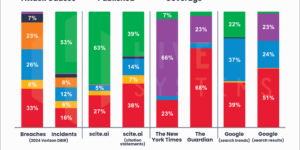The Trump administration intends to brand its rollback of Obama-era fuel economy requirements as a life saver, literally — even labeling it the “Safer and Affordable Fuel Efficient Vehicles Rule.”
But some auto safety experts already question the premise that U.S. traffic deaths are rising because new cars are getting more expensive.
“The idea that fuel efficiency standards are causing vehicles to be less safe is ludicrous,” said Jack Gillis, executive director of the Consumer Federation of America. “The U.S. auto industry has just experienced its two largest selling years in history, and fuel efficiency is helping. People love their SUVs and pickups, but they love them even more when they save money on gas.”
The National Highway Traffic Safety Administration, however, will assert that easing fuel efficiency mandates will cut U.S. traffic fatalities by 1,000 per year by making new, safer cars more affordable, according to a person familiar with the proposed rollback that’s expected to be released as early as next week.
NHTSA will contend that under the Obama administration’s rules, prices for new cars and light trucks would rise more than previously estimated, the person said. Prices would rise so much, in fact, that Americans hit by new-car sticker shock will keep older, less-safe vehicles on the road for longer, said the person, who asked not to be identified discussing the proposal ahead of its release.
A NHTSA spokeswoman forwarded a request for comment to the Transportation Department, which didn’t respond.
Earlier: Trump Is Said to Seek Repeal of California Clean-Car Powers
The plan to entwine efficiency standards, auto prices and highway safety is a new twist on the longstanding debate over whether mandates to improve fuel economy put motorist safety at risk. It also echoes arguments mounted by some automakers, who’ve said the Obama-era standards would cost more to achieve than his agencies recognized, and hurt vehicle affordability.
It comes as NHTSA and safety advocates have looked for ways to reverse highway fatality rates, which have spiked recently following years of steady declines. While NHTSA estimates traffic deaths inched down by 0.8 percent in 2017, that followed a 5.6 percent rise in 2016 and an 8.4 percent jump in 2015, the largest gains seen in more than a decade.
NHTSA may have begun to lay some of the groundwork for that argument in April, when it published figures showing that a greater proportion of car, pickup truck and SUV passenger fatalities occurred in older vehicles than in newer ones.
“The analysis shows that among all passenger vehicle (passenger cars, SUVs, pickup trucks or vans) occupants involved in a fatal crash, the proportion who were fatally injured increases with vehicle age,” the agency said in a research note.
To be sure, modern automobiles offer far more safety technologies and better crash protection than they did decades ago, including airbags throughout the cabin, electronic stability control, and automatic emergency braking systems, to name a few.
Yet the bulk of deadly crashes are influenced by human factors. According to NHTSA, more than half of the collision deaths in 2016 were linked to drunk driving or not wearing a seat belt, for example.
Inter-Agency Conflicts
The argument will be detailed in an analysis released when the proposal is made public, now slated for early next week following delays related to last-minute conflicts between officials at the EPA and NHTSA over what it should say, said people briefed on the deliberations.
One person familiar with the discussions, who spoke on the condition of anonymity, acknowledged that disputes between EPA and Transportation Department officials were slowing the release, but cast the back-and-forth as not uncommon when ironing out final details on a significant regulatory proposal.
“Our efforts with DOT have been reflective of a robust and constructive inter-agency process that the American people expect — and deserve — when agencies are proposing rules of such consequence,” said James Hewitt, a spokesman for the EPA.
The plan is expected to call for freezing fuel-economy standards starting in 2020, rather than gradually increasing them each year as the current regulation requires, and begin the process of revoking California’s ability to set its own, tighter standards.
Skeptical Reception
When it’s released, it will likely be met by skepticism.
Shedding weight is a primary way that automakers can and have improved the fuel efficiency of their vehicles. Critics of fuel-economy mandates say that lighter vehicles are less safe in a crash than heavier ones, meaning policies that encourage lighter vehicles put motorists at risk.
Supporters of that view point to studies such as one by the National Academy of Sciences in 2001, which estimated that vehicle downsizing in the 1970s and 1980s may have contributed to 1,300 to 2,600 additional highway deaths in 1993.
But it doesn’t account for a change in the way fleet-wide fuel efficiency is measured. At one time, the standard set simple average mileage targets for automakers, encouraging them to sell smaller, lighter cars to compensate for larger, heavier ones.
Vehicle ‘Footprint’
In 2009, though, regulators began tailoring mileage targets based on the mix of vehicles each company sells and each vehicle’s “footprint” — the area between a car’s four wheels — with requirements for all vehicles growing more rigorous each year. In effect, each manufacturer’s annual efficiency requirements are custom-tailored to the mix of vehicles they sell in a given model year. So a carmaker’s pickup trucks can have lower fuel efficiency than its subcompacts — but they still must improve each year.
That shift “removed the incentive for automakers to sell a lot of small, lightweight cars in order to offset the fuel used by their bigger gas guzzlers,” said Russ Rader, an IIHS spokesman. “Size and weight matter a great deal in how well people are protected in crashes. The revised Obama-era rules allow safety and less fuel consumption to go hand in hand.”
A 2017 study by researchers from the University of Southern California, Yale University and the University of California at Irvine suggests that weight reductions distributed across the full array of vehicle types available to consumers can reduce fatalities.
Antonio Bento, a professor of public policy and economics at USC and a co-author of the study, said the fatality risk is higher when vehicles with vastly different weights collide — think of pickup truck smashing into a compact car. If the mean weight of new vehicles declines, though, along with a more even distribution of weight across vehicles, fatalities may be reduced.
Bento, who works on vehicle issues with the California Air Resources Board, was skeptical of NHTSA’s argument. “We have no empirical evidence to that effect,” he said.




















 What’s Not Changing in 2025: Homeowners Outlook, Re Retentions
What’s Not Changing in 2025: Homeowners Outlook, Re Retentions  Reporter’s Notebook: ‘Nobody Else Does Telematics,’ Lemonade Exec Says
Reporter’s Notebook: ‘Nobody Else Does Telematics,’ Lemonade Exec Says  Slideshow: Carrier Management’s 2024 Top Editor’s Picks (Unlocked)
Slideshow: Carrier Management’s 2024 Top Editor’s Picks (Unlocked) 



